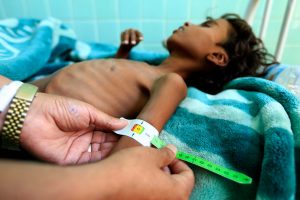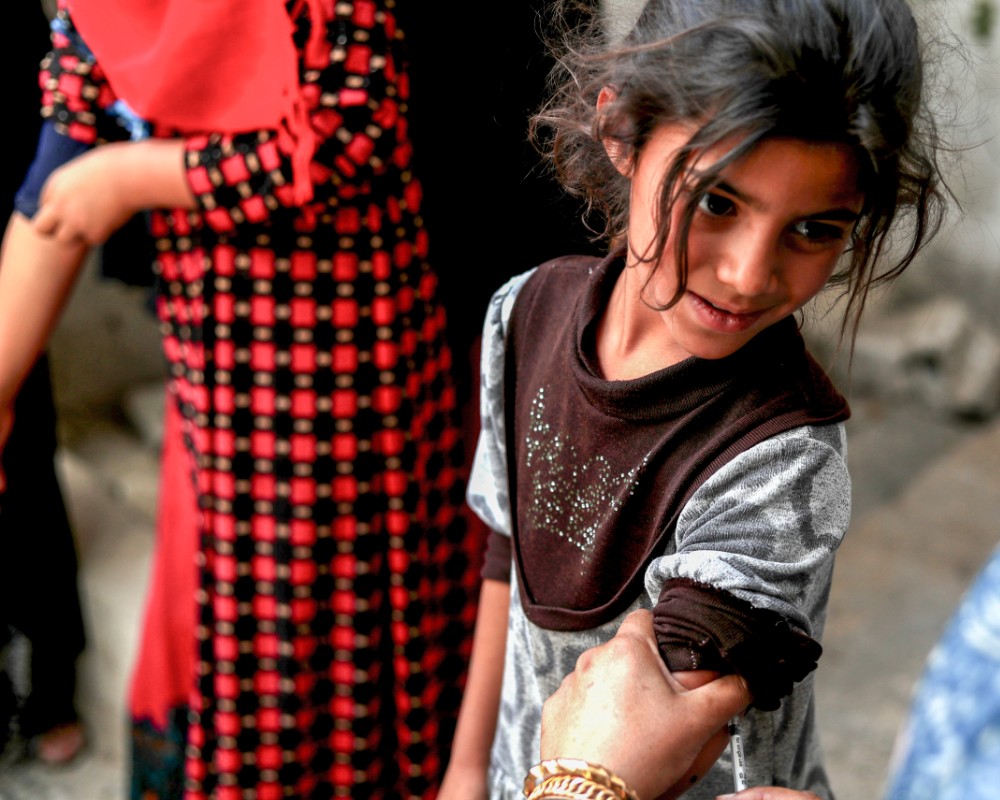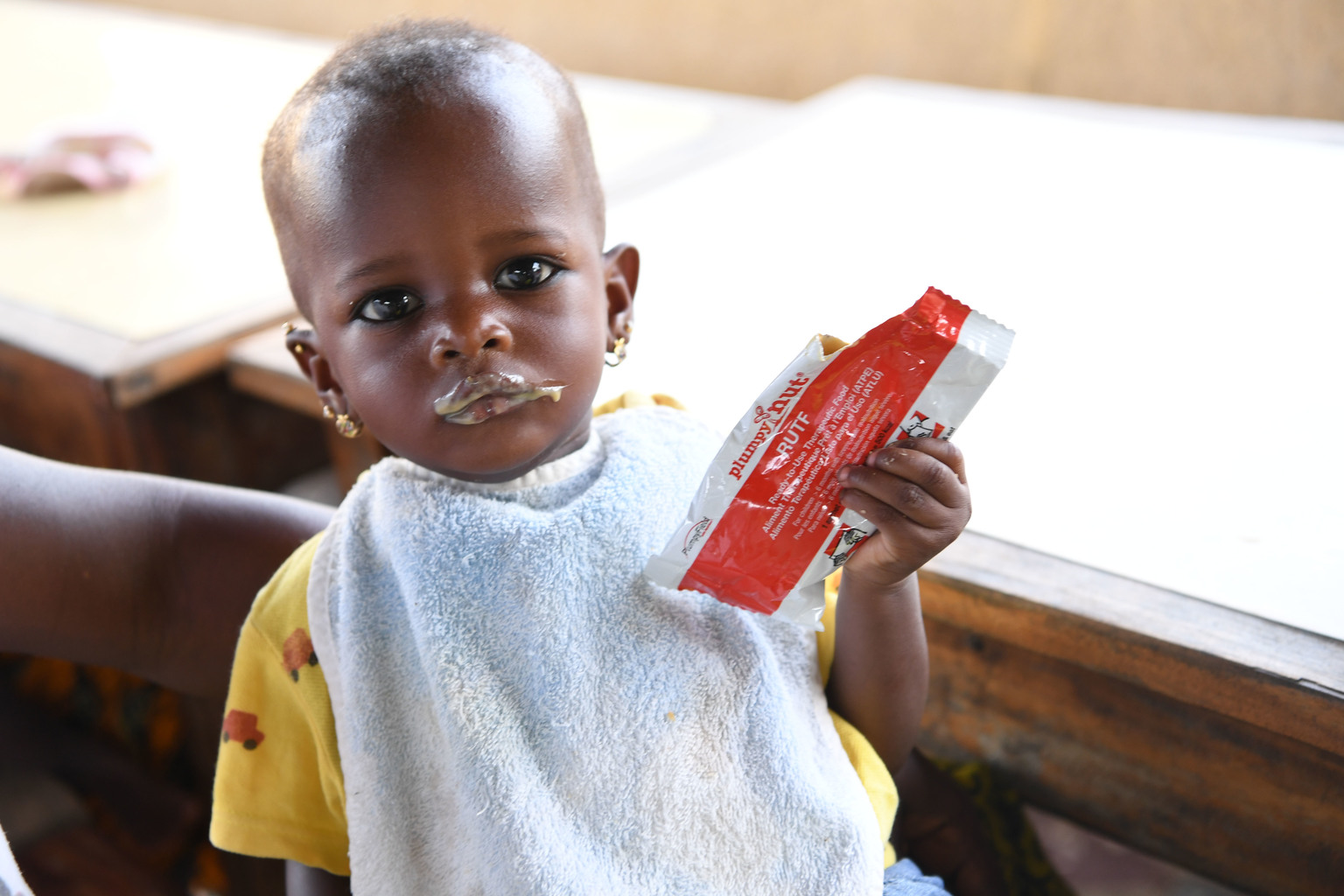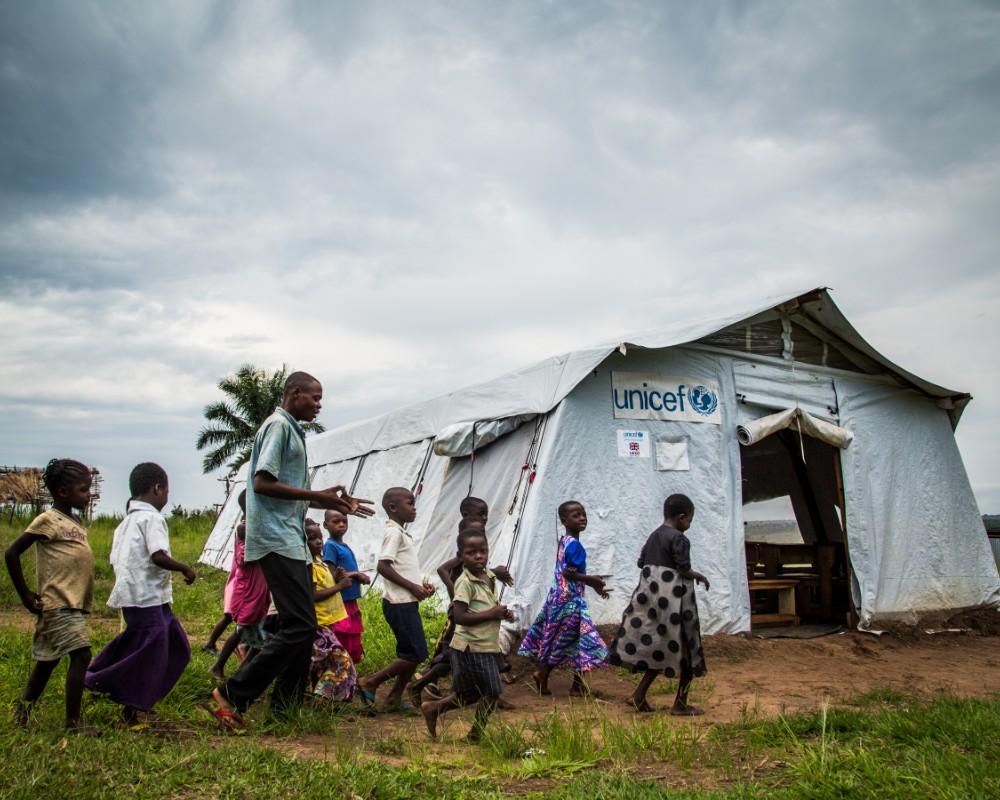Conflict and natural disaster hit home the hardest when they affect women and children, and so 70 years after UNICEF first began delivering emergency aid in the aftermath of World War II to help starving children in Europe, our mission as a children’s charity to provide relief is more vital than ever before.
Today UNICEF faces new challenges. Globally, humanitarian needs are growing and the average emergency now lasts more than nine years. Conflict, like the wars in Syria and Yemen, famine, cyclones, climate change and the displacement of refugee children. Each one requires us to innovate and continue our work both on the ground and behind the scenes.
UNICEF believes that children play a vital role in future solutions and that every child deserves a childhood. By providing emergency relief as quickly as possible when disaster strikes, we are helping change communities for the better.
With a field presence before, during and after emergencies, a vast network of partners including governments, civil society, communities and private sector partners and leading responsibility in areas of water, sanitation and hygiene (WASH), nutrition, education and child protection, we are uniquely positioned to respond to the needs of children in emergencies at speed and at scale.
Working tirelessly in some of the world’s toughest environments, UNICEF continues to rebuild lives by better adapting emergency response programmes to address the needs of specific populations affected by poverty, climate change and war.
Read more about some of our areas of work:

Vaccinations
Each year, 1.5 million children die from preventable diseases, with 30 per cent of deaths among children under five from vaccine-preventable causes. UNICEF provides an effective immunization programme that seeks to protect the most vulnerable.
We aim to vaccinate children in every community – no matter how remote the location – in order to prioritise their wellbeing. We also continue to look for new ways of providing vaccinations without losing effectiveness due to extreme weather conditions: by harnessing solar power, telemetrics and mobile technology, the lives of more children can be saved.
The chaos of two cyclones in the space of six weeks has caused devastation, on an unprecedented scale, in Mozambique. Millions of people are without access to clean, safe drinking water, making vaccinations all the more urgent.
By protecting children from deadly childhood diseases such as Measles, Polio, Tetanus and Diphtheria, we are helping maintain hard-gained progress in other areas of their lives and development.

Therapeutic Food
The humanitarian crisis in Yemen has posed one of the highest threats of economic instability and high food prices, resulting in large numbers of children suffering from Severe Acute Malnutrition.
UNICEF work on the ground internationally to install various feeding centres for children most in need. We provide ready-to-eat therapeutic food (RUTF) that has been specially developed for malnourished children; simple, high-calorie food such as Plumpy Nut can save a child’s life.
The impact of the Yemen famine has driven us to seek further solutions in providing emergency relief as quickly as possible. We make high-calorie biscuits and fortified milk available for malnourished children, and strive to provide clean water to those who need it.

Education
Alongside providing immediate protection and care for children in crisis, we believe that every child has the right to an education. Still, a variety of factors disrupt millions from receiving access to learning opportunities – geographical location, gender, conflict and a number of other circumstances.
The increasing number of refugees displaced by ongoing conflicts has forced approximately 27 million children out of school – with girls 2.5 times more likely to be out of school than boys.
UNICEF prioritises child education in response to emergency crises and work tirelessly to make sure children facing the largest threats are not left behind in their personal and professional development.
We believe that children are the future – and also recognise the link between social norms and girls’ education. For that reason, our work also includes building the foundation for positive family practices and gender equality.
The longer girls stay in school, the more empowered they become – and better protected from issues such as child marriage and poverty. We strive for all children to receive the best chance they can get, regardless of gender or location.

CHILDREN IN CONFLICT
Children in Conflict
Conflict remains a primary driver of humanitarian need with more countries embroiled in violent conflict than at any other time in the past 30 years.
Widespread displacement and the destruction of vital infrastructure in conflict areas are having devastating consequences on children’s lives, impacting their physical and mental health. This is especially true in countries like Syria, Yemen and the Democratic Republic of the Congo, where conflict-related humanitarian crisis have endured for years.
How Can UNICEF Respond to Emergencies So Quickly?
UNICEF continues to work relentlessly alongside other committees to aid the world’s poorest children, and have demonstrated their ability to provide a fast response in emergency situations thanks to an extensive global network.
Our presence is felt worldwide, with relief operations ongoing in 190 countries. We are particularly proud of our country-level humanitarian action beginning with UNICEF Ireland, and support from a worldwide architecture made up of 7 regional offices and 20 headquarters divisions.
By collaborating with local governments, NGOS and international charities, we can better understand the needs of each individual community and change the lives of children worldwide.
The Supply Division manages three principal hubs, which have been established to ensure that in emergencies, children and their families receive necessary supplies quickly and effectively, with minimum transport costs.
These hubs, in Dubai, Panama and Shanghai, together with the Copenhagen operation contain sufficient emergency supplies to meet the needs of 250,000 people for three weeks.
Support UNICEF Today
Monsoons, cyclones, the Syria crisis, drought, famine and ongoing war and violence – the current issues emerging continue to pose a series of challenges for the wellbeing of our children.
Children can fall to victim to disease and starvation very quickly, which is why we dedicate our efforts to understanding the complexity of child poverty, its causes and possible solutions.
By donating to UNICEF, we can work together to improve the chances of a child’s survival and give them the childhood they deserve.

